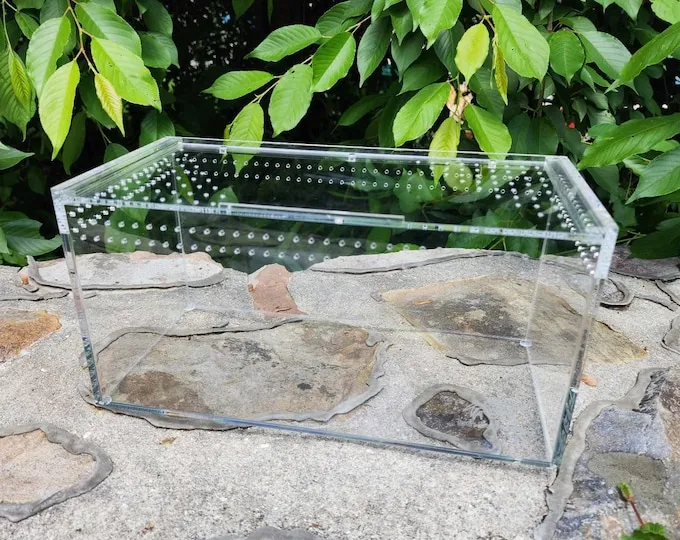Understanding Tarantula Enclosure Needs
Creating the perfect habitat for your tarantula is crucial for its health, happiness, and longevity. A key aspect of this is providing an enclosure that is appropriately sized. The right enclosure size gives your tarantula enough space to move, hunt, and feel secure. A poorly sized enclosure, on the other hand, can lead to stress, behavioral issues, and even health problems. This guide will walk you through everything you need to know about choosing the right enclosure size for your tarantula, ensuring that your eight-legged friend thrives in its new home.
Factors Affecting Enclosure Size
Several factors play a role in determining the ideal enclosure size for your tarantula. Understanding these factors will help you make an informed decision, taking into account the species, size, and natural behaviors of your tarantula. Consider these important aspects carefully to avoid any potential problems and to provide the best possible environment for your pet. Choosing the right enclosure size is the first and most essential step in providing your tarantula with a comfortable and secure habitat, positively impacting your tarantula’s overall well-being and quality of life.
Tarantula Species and Size
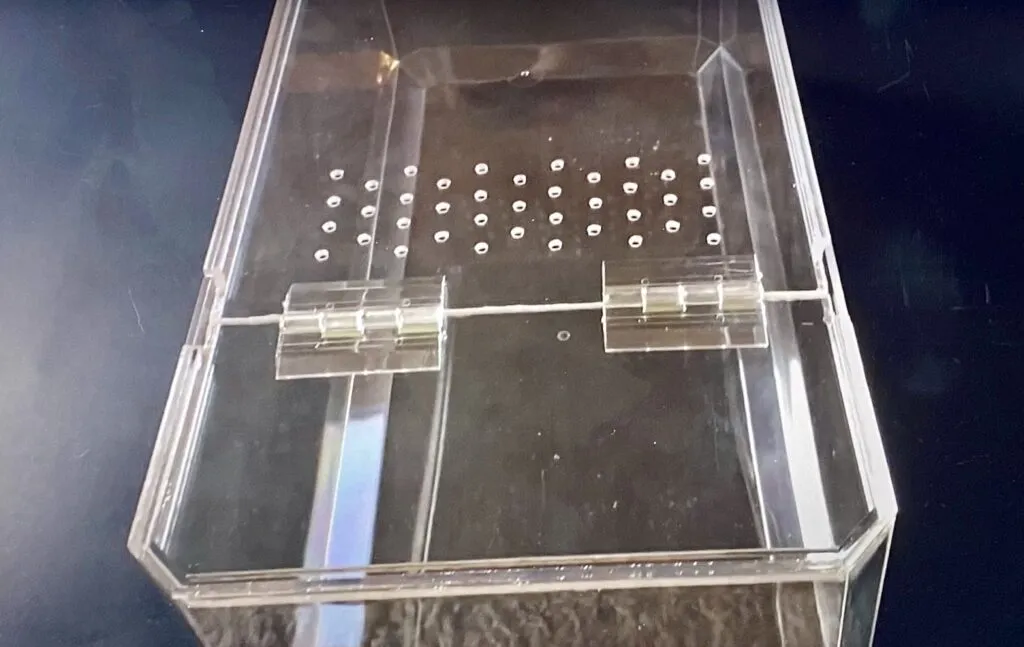
Different tarantula species have varying sizes and activity levels. Fast-growing, large terrestrial species like the Goliath Birdeater (Theraphosa blondi) will require significantly larger enclosures than smaller, slower-growing arboreal species such as the Antilles Pinktoe (Caribena versicolor). It is critical to research your specific tarantula species, paying particular attention to its adult size and typical behavior. Larger tarantulas need more floor space and height to roam, hunt, and potentially molt safely. Understanding these factors helps you provide an enclosure suitable for your tarantula’s growth and activity.
Tarantula Size and the Enclosure
The general rule of thumb is to provide an enclosure that is at least twice the tarantula’s leg span in width and length. For example, a tarantula with a 4-inch leg span would ideally require an enclosure that is at least 8 inches wide and 8 inches long. Vertical height is also essential, especially for arboreal species that climb and may require enough height for molting. Provide the enclosure with ample space to promote exercise, and to allow the tarantula to explore, which helps to keep it from being bored, and to ensure it can thrive in its captive environment.
Enclosure Dimensions
When determining the size of your enclosure, consider both the floor space and the height. Ground-dwelling tarantulas need ample floor space, while arboreal species need vertical space to climb and build webs. The enclosure’s shape can also impact the available space. A rectangular or square enclosure generally offers more usable space than a circular one. Choosing the right dimensions ensures that your tarantula has enough room for movement and exploration, allowing it to build its web, and also to create its hideout.
Vertical vs. Horizontal Enclosures
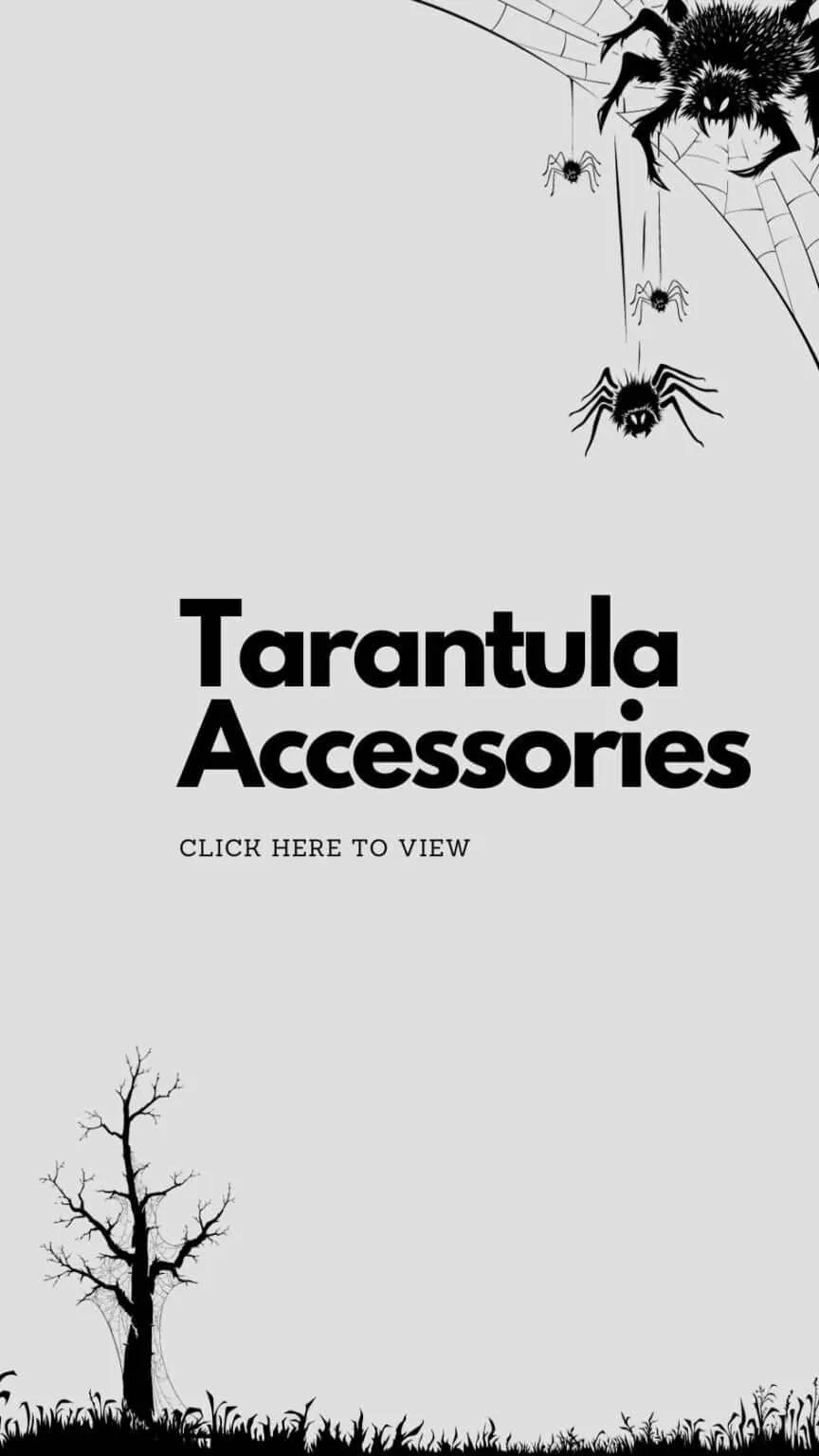
The choice between a vertical and horizontal enclosure often depends on the tarantula’s natural habitat and behavior. Arboreal tarantulas, which live in trees, will do better in vertical enclosures that allow them to climb and create webs. Terrestrial tarantulas, on the other hand, benefit from horizontal enclosures, which provide more floor space for roaming and burrowing. A hybrid enclosure may suit semi-arboreal species, which spend time on the ground and in trees.
How to Measure for Enclosure Size
To measure for enclosure size, start by measuring your tarantula’s leg span. Then, calculate the enclosure dimensions based on the guidelines mentioned earlier—at least twice the leg span in width and length. For arboreal species, add height to accommodate climbing. When in doubt, it’s always better to err on the side of a slightly larger enclosure. This provides your tarantula with more space and reduces the risk of overcrowding. Always ensure the enclosure has a secure lid to prevent escape.
Choosing the Right Enclosure
Once you have determined the appropriate size, it’s time to choose the right enclosure. Several materials are commonly used, each with its pros and cons. Glass enclosures provide excellent visibility and are easy to clean, but they can be heavy and prone to cracking. Acrylic enclosures are lightweight and shatter-resistant, offering a clear view, but they can scratch easily. Plastic enclosures are generally more affordable and lightweight, but ventilation can be a concern. The material and design must allow the tarantula to thrive, while providing you with easy access for maintenance.
Substrate Considerations

The type of substrate you use in your tarantula’s enclosure can also influence the ideal size. Certain substrates, like peat moss or coco fiber, retain moisture well and are suitable for humid environments, while others, like dry sand or vermiculite, are better for drier conditions. Choose a substrate that matches your tarantula’s specific needs. Ensure the substrate is deep enough for burrowing species to dig and build burrows. Proper substrate selection helps maintain humidity, helps the tarantula to feel secure, and contributes to the overall health of the enclosure.
Substrate Depth and Its Impact
The depth of the substrate is crucial, particularly for burrowing tarantulas. The substrate must be deep enough to allow the tarantula to create its burrow, which it needs for shelter, safety, and molting. As a general rule, the depth of the substrate should be at least as deep as the tarantula’s leg span. For example, a tarantula with a 3-inch leg span should have at least 3 inches of substrate depth. This depth also helps regulate humidity and provide a natural environment that encourages the tarantula to exhibit natural behaviors.
Enclosure Decor
Besides the size, your enclosure’s décor contributes to your tarantula’s well-being. Providing appropriate hides, climbing structures, and decorations can make your tarantula feel safe and secure, helping it to thrive in its habitat. Choose decorations that are safe and non-toxic, avoiding anything that could injure your tarantula. Including these elements provides enrichment, encourages natural behaviors, and makes your enclosure look more visually appealing.
Hiding Places and Climbing Structures
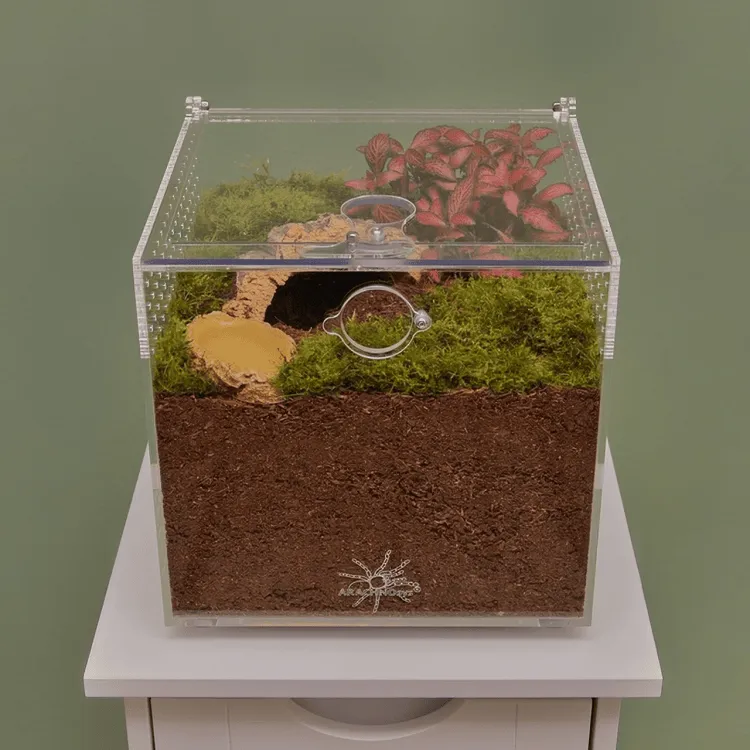
Hiding places are essential. They provide a sense of security, allowing your tarantula to retreat and feel safe, especially during molting or when stressed. You can use cork bark, artificial plants, or commercially available hides. Climbing structures like branches or rocks are beneficial for arboreal species, enabling them to explore and exhibit natural climbing behaviors. Choose decorations that do not have sharp edges or potential hazards and that are safe for your tarantula.
Ventilation Needs
Adequate ventilation is crucial for maintaining a healthy environment in your tarantula’s enclosure. Proper ventilation prevents the buildup of harmful gases, reduces humidity, and prevents mold and bacteria growth. Poor ventilation can lead to respiratory problems and other health issues for your tarantula. Providing sufficient airflow is essential for your tarantula’s survival, ensuring a clean, healthy habitat. The placement of the ventilation holes and how much airflow is provided should depend on the species.
Airflow and Humidity
Airflow is important for maintaining humidity levels within the enclosure. Too much humidity can lead to fungal growth, while too little can cause problems with molting. Ventilation helps regulate both. The size and placement of ventilation holes should be appropriate for the species and the environment. Some enclosures have cross-ventilation, where the airflow passes through the enclosure from one side to another. Others have ventilation at the top, which helps with the removal of stale air and control of moisture.
Preventing Mold and Bacteria Growth
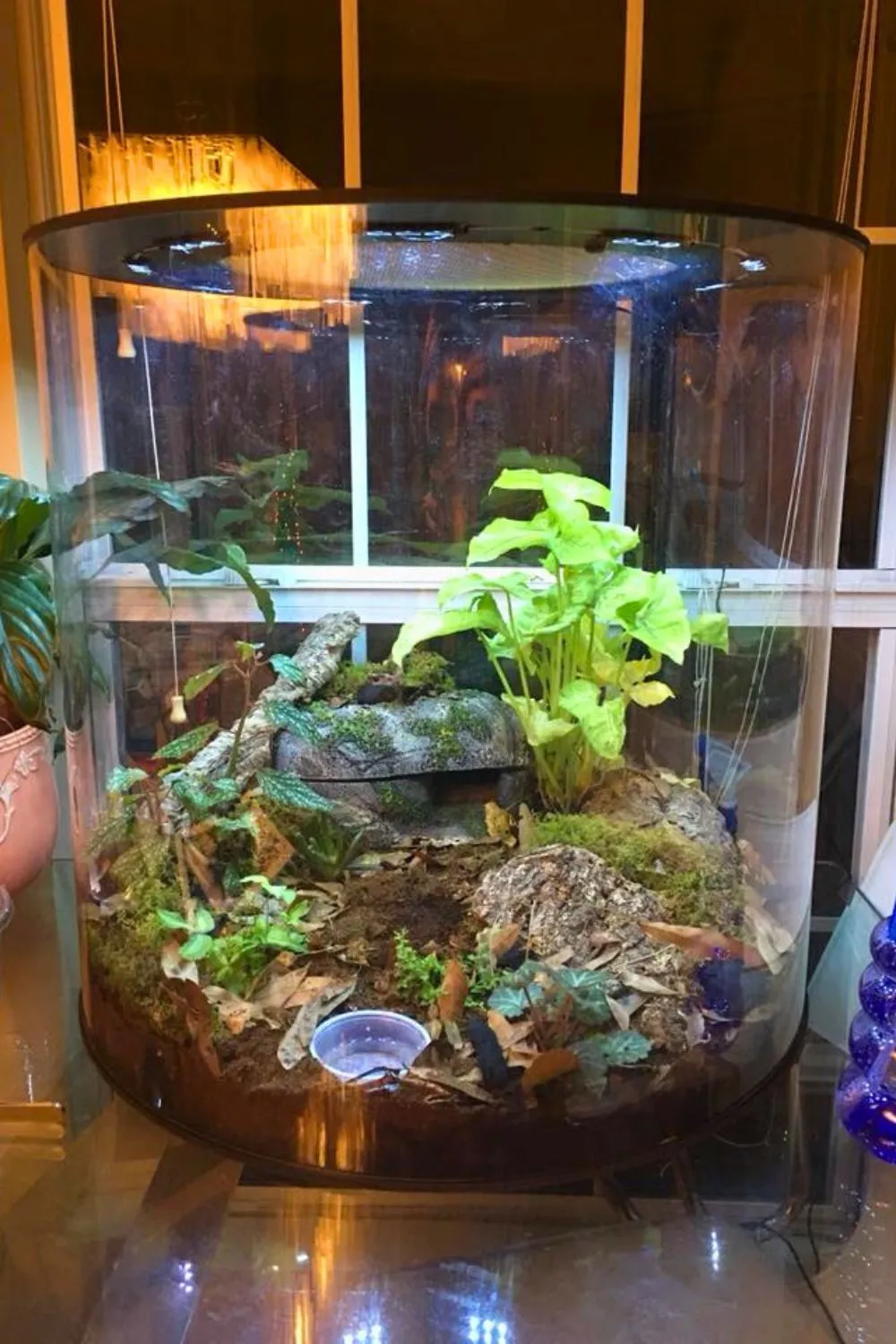
Proper ventilation is essential for preventing mold and bacteria growth in your tarantula’s enclosure. Stagnant, humid environments are breeding grounds for harmful microorganisms. Ensure there is adequate airflow to reduce humidity levels and prevent the buildup of condensation. Regular cleaning and maintenance, including the removal of uneaten food and old molts, also help prevent the growth of mold and bacteria. Monitoring your enclosure for signs of mold, such as discoloration or musty odors, is also critical to maintaining a healthy environment.
Maintaining Your Tarantula’s Enclosure
Maintaining your tarantula’s enclosure is essential to ensure the health and happiness of your pet. Regular cleaning, appropriate humidity levels, and proper temperature regulation are all critical factors. A well-maintained enclosure not only benefits your tarantula but also enhances the aesthetic appeal of your living space. By following a consistent maintenance schedule, you can create a sustainable and thriving environment for your eight-legged friend, allowing it to flourish.
Cleaning and Maintenance Schedule
Establish a regular cleaning and maintenance schedule to keep your tarantula’s enclosure clean and healthy. Spot-clean the enclosure daily, removing any uneaten food, feces, and shed skin. Perform a more thorough cleaning weekly or bi-weekly, replacing the substrate, cleaning the enclosure walls, and disinfecting decorations. When cleaning, use a reptile-safe disinfectant. Always wash your hands thoroughly before and after handling the enclosure, and make sure the tarantula is in a safe, separate container.
Watering and Feeding
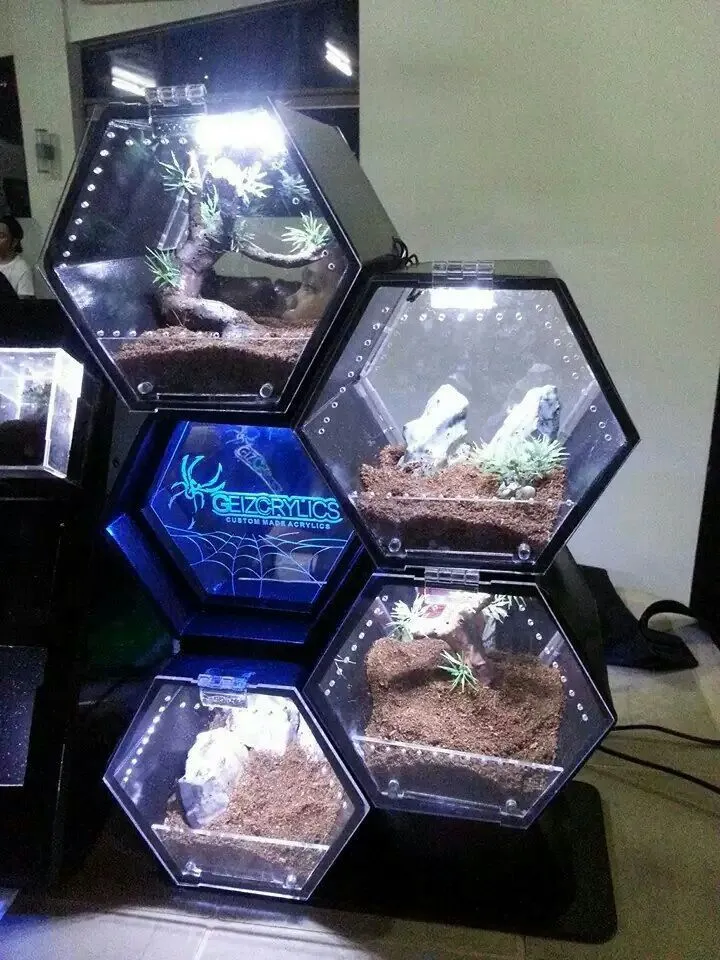
Provide a shallow water dish with fresh, clean water at all times. For some species, misting the enclosure regularly may be necessary to maintain adequate humidity levels. Feed your tarantula according to its species-specific needs. Remove any uneaten food after 24 hours to prevent mold and bacteria growth. Monitor your tarantula’s feeding habits and adjust the feeding schedule accordingly to ensure it stays healthy and well-nourished. Regularly monitoring your tarantula’s behaviors during feeding ensures that they are getting the nutrition required.
Common Mistakes to Avoid
Several common mistakes can negatively impact your tarantula’s health and well-being. Avoiding these mistakes will help you provide the best possible care for your pet. Always research the needs of your tarantula’s species, as some may have unique care requirements. Being informed can save your tarantula from stress, injury, or even death. Recognizing and correcting these common errors will greatly improve the life of your tarantula and enhance your experience as a tarantula owner.
Overcrowding and Under-sizing the Enclosure
One of the most critical mistakes is overcrowding or under-sizing the enclosure. A cramped enclosure can stress your tarantula, leading to a lack of appetite, aggression, and difficulty molting. Make sure to provide an enclosure that is appropriately sized for your tarantula’s leg span. Providing adequate space allows your tarantula to feel secure, explore, and engage in natural behaviors. Always remember the rule of thumb, ensuring that the enclosure is at least twice the size of the tarantula.
Ignoring Ventilation
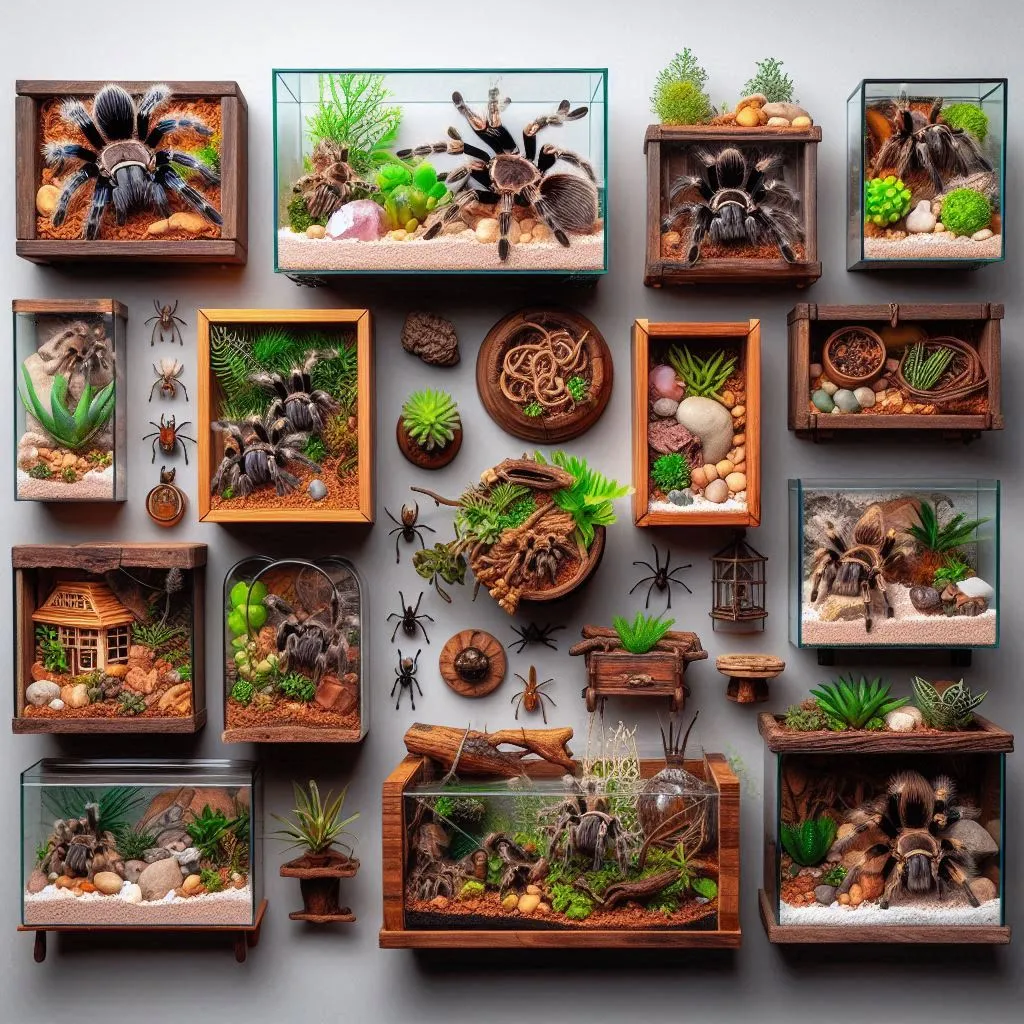
Ignoring ventilation is another common mistake. Poor ventilation can lead to a buildup of humidity, which promotes the growth of mold and bacteria, as well as respiratory problems for your tarantula. Ensure that your enclosure has sufficient airflow to regulate humidity levels. Make sure that the ventilation holes are adequate, and are not blocked by substrate or decorations. Proper ventilation is essential for maintaining a healthy and comfortable environment for your tarantula, promoting good health and well-being.
By following this guide, you can provide your tarantula with the perfect enclosure, one that meets its needs and helps it thrive. Remember that each tarantula species has unique requirements, so always research your specific species to provide the best possible care. With the right enclosure, you will be able to enjoy the fascinating world of tarantulas for many years.
